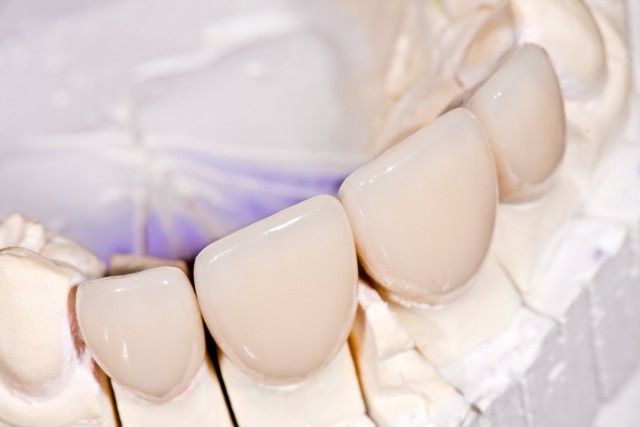
Preparing the Intaglio of Restorations for Delivery
Want your indirect restorations like crowns, inlays and onlays to stay on? Of course! None of us, patients included of course, want to have to deal with restorations that come off.
While our preparations and occlusal design all play a role, so does making sure the internal surface of our restorations have been prepared and treated appropriately. Keep reading for material-specific tips on this.
Metal
These are super easy. If you are using a decent lab, you really just need to make sure you did not get gunk on it when you tried it in. If not, a rinse and dry is likely all you need here. If you got stuff on the internal or had to adjust the internal, then hit it with some light air abrasion. I like to use Coe Jet 30 from 3M for this.
Bonded Ceramics
These are the most finicky and sensitive materials of the bunch, thus you need to pay a lot of attention to how you prepare and treat these.
Your first step is to try in the restoration, but only do this once you know the internal is clean. Notice I did not say etched; cleaned is different than etched. Again, if you used decent lab it should be clean; however, if you milled it in your office, it is NOT clean when it comes out of the milling chamber. You need to clean it prior to trying it in so you don’t get oil and lube from the milling process on the tooth, which can affect your adherence to the tooth. So how do you clean it? One option is a steam cleaner, and another option is scrubbing the internal with soap and water. If you’re like me, you can do both; I scrub with soap and water then steam.
After try-in, the next step is prepare the surface for bonding. If your restoration has not been etched by the lab, do so per the manufacturer’s recommendations for the particular ceramic that has been used. If your lab etched the crown, you still need to clean the internal again as the etch is no longer good after you tried it in. It’s also worth noting if you put it in the model, it is also not good anymore. The easiest way I have found to “freshen” or “re-activate” the etch is to use Ivoclean from Ivoclar; it’s super simple to use while being quick, easy and effective. The last thing to do is silanate the restoration. Once this is done, you are ready for delivery.
Zirconia and Conventionally Cemented e.max
This is almost as easy as metal. Most of the time for me it’s as simple as using Ivoclean after try-in. That’s it.
If you have gunk on the inside of the crown, then the same soapy water followed by steam as mentioned above works great before the Ivoclean. Then, if you’re using a resin cement, simply treat the inside with Monobond Plus, which is a silane agent you can also use for your other ceramics.
FOUNDATIONS MEMBERSHIP
New Dentist?
This Program Is Just for You!
Spear’s Foundations membership is specifically for dentists in their first 0–5 years of practice. For less than you charge for one crown, get a full year of training that applies to your daily work, including guidance from trusted faculty and support from a community of peers — all for only $599 a year.

By: John Carson
Date: March 30, 2016
Featured Digest articles
Insights and advice from Spear Faculty and industry experts


